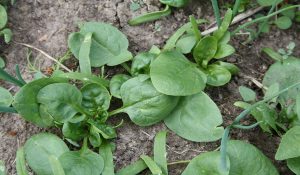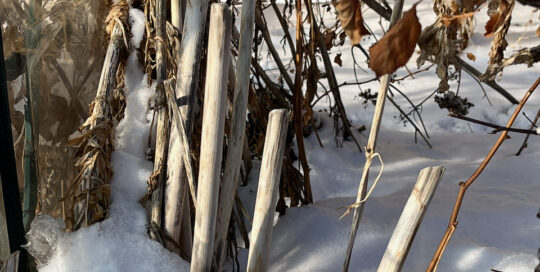Polyculture for the Home Garden
Views: 4825

After more than three decades of growing stuff there’s one thing I know: there’s always something more to learn. As I mentioned in earlier posts, this year is the year of polyculture planting. So far I have a bed comprised of radishes, spinach, carrots, and lettuce with a few extra potatoes tucked in on one end.
I also have spinach popping up in between my ‘Copra’ onions, and it’s my hope that the strong smelling onions will repel any flea beetles that might be in the area. It’s hard enough to grow a substantial amount of spinach (it’s one of the few veggies my husband truly enjoys so I like to have a lot to eat in the spring, as well as plenty to freeze) let alone dealing with leaves riddled with tiny holes.
In my big raspberry patch I planted carrots along the perimeter because it’s kind of a wasted space, at least until the raspberries migrate to that zone, plus carrots are great at breaking up soil. I think it’ll be a good way to loosen the soil to allow the raspberry roots to obtain more nutrients and moisture. Alongside another edge of the raspberries are my grapevines to help slow the wind that can be so brutal it’ll flatten weak canes.
Benefits of Polyculture
There are plenty of advantages to planting many varieties in one bed instead of sticking with the traditional monoculture rows of veggies. First of all is polyculture gardening leads to more production out of a small space, particularly when plants have different growing habits. For example, with the onions and spinach the onions are obviously growing more underneath the soil. The spinach takes up the space, and there’s plenty of it at this time of the year, in between the onion plants. Once the onions are larger, the spinach will be done.
Other times it’s using plants to help improve the soil and provide conditions that are beneficial to certain plants. Root vegetables such as carrots and beets won’t thrive in hard packed soil, but they improve the tilthe of soil that isn’t perfect by sending down their roots. Plus, each of the vegetables takes something from the soil, and gives something back. When you plant vegetables together they complement each other by exchanging nutrients.
I’ve also talked to gardeners, particularly in the south, who take advantage of some plants to shade others in the hot part of the season. It’s hard, if not impossible, to grow greens and plants that prefer cooler conditions with using a shade cloth or planting in the shade of tall plants. Put these different varieties together to create microclimates in the garden. I do this by planting my cabbage (at least this year) near my golden currant and Nanking cherry bushes. They slow the wind and provide a little cover from the harsh western sun, which will absolutely bake plants, enough to keep the cabbage from becoming tough.
Polyculture for Pest Control
Poly-planting, particularly when you’re diligent about rotating beds, keeps the pests guessing.
Guess what I saw on one of my Wall-O-Waters surrounding the tomatoes a couple of days ago? A Colorado potato beetle! I had potatoes a couple of beds over last year, and it must have overwintered nearby. They emerge in the spring as adults, ready to lay eggs on the potato plants and cause damage throughout the season.
I think this one is a little early since the potato plants are just starting to poke through the ground. But the good news is there’s nothing for them to eat. I have the spuds in a completely different section interplanted with sunflowers that will further help shade them and prevent sunburn.
I think I’ll also seed some green beans in the area to further keep those little nasties away.
It’s been hard for me to plant more than one plant in a bed because I’m used to planting one crop in one area, but I’m finding as I think through how the plants benefit each other, it’s becoming easier. I’ll be sure to keep you apprised on how it’s working throughout the season, and what I might do differently next year.
Meet Amy Grisak
Amy is a freelance author and photographer in Great Falls, MT who specializes in gardening, foods, and sustainable agriculture. She provides information on every kind…
Amy's Recent Posts

This Little Piggy is a Problem: Dealing with Feral Hogs








